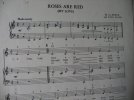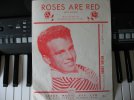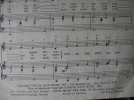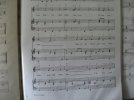You are using an out of date browser. It may not display this or other websites correctly.
You should upgrade or use an alternative browser.
You should upgrade or use an alternative browser.
What are these numbers top of Treble Cleff staffs?
- Thread starter Rayblewit
- Start date
No idea mate. They seem to relate to the pitch of each note, but the purpose of it is lost on me. I wonder if it's some kind of instructional aid?
- Joined
- Jun 6, 2014
- Messages
- 4,111
- Reaction score
- 1,736
They look like degree numbers, since specific numbers always go with specific notes and they're in ascending order:
G below Middle C = 1
A below Middle C = 2
B below Middle C = 3
Middle C = 4
D above Middle C = 5
E above Middle C = 6
F above Middle C = 7
G above Middle C = 8

G below Middle C = 1
A below Middle C = 2
B below Middle C = 3
Middle C = 4
D above Middle C = 5
E above Middle C = 6
F above Middle C = 7
G above Middle C = 8

The Degrees of the Scale - Music Theory Academy
The Degrees of the Scale Every major and minor scale has 8 notes. These individual notes are called degrees of the scale. We could number them 1-8, but
www.musictheoryacademy.com
Except that this can't relate to the G Major scale Michael - otherwise the 7th degree would be F#.
Rayblewit
Love Music / Love Life
Degrees of Scale! Wow! Music theory is so complex.
Anyhow, Paul and Mike at least I know now that I should just ignore those numbers.
Many thanks
R
Anyhow, Paul and Mike at least I know now that I should just ignore those numbers.
Many thanks
R
- Joined
- Jun 6, 2014
- Messages
- 4,111
- Reaction score
- 1,736
I thought about that, but I can't think of anything else that comes close to fitting. There are at least a couple of accidentals used, if that's relevant. Maybe they're scale degrees for a mode that begins with G but uses the notes of the C Major scale? The best thing to do would be look in the book to see what the publisher says.Except that this can't relate to the G Major scale Michael - otherwise the 7th degree would be F#.
Edit: Mixolydian mode:
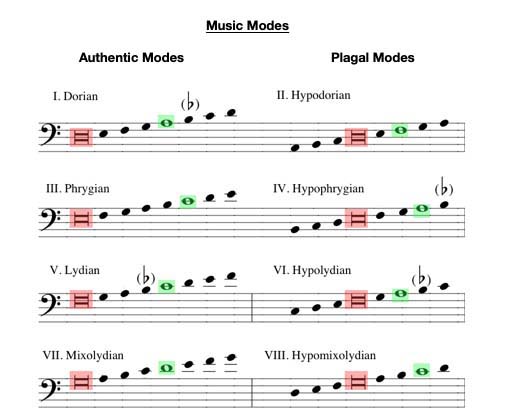
Modes - Music Theory Academy - Music Modes Explained
The term modes in music describes the scales which dominated European music for over 1,000 years up until 1500 and continued to be heavily influential for
www.musictheoryacademy.com
I think this is ultimately where our curiosity will be satisfied.The best thing to do would be look in the book to see what the publisher says
- Joined
- Jun 6, 2014
- Messages
- 4,111
- Reaction score
- 1,736
I agree, and I can't think of any good reason why the publisher would want to include scale degrees.
The only reasons I can think of are that they might be meant for the singer's benefit, since they seem to be connected to the notes of the vocal melody, although I can't imagine how they'd be of any benefit to the singer; or that they might be given for instructional purposes, although I don't see why you'd need to an entire song for that.
And this is assuming that they actually are scale degrees, which is questionable. As I said, they look like scale degrees, given their numeric values and the way specific values always correspond to specific notes-- at least in the portion of the music we can see-- and the way the notes and values fit the pattern that would be expected of scale degrees.
Since the key signature has 0 sharps and 0 flats, the song is ostensibly in the key of C Major. But then the first chord of the song is G7, and those potential scale degrees correspond to a G Major scale with the exception of the 7th being flatted or diminished-- as befits a G7 chord. So would it be possible to say that the song is in the Mixolydian mode of G? I don't know the accepted practices regarding modes as far as things like key signatures. I mean, we can refer to a song that has 0 sharps and 0 flats as being in the key of A Minor rather than C Major, so can that sort of practice be extended to the modes?
The only reasons I can think of are that they might be meant for the singer's benefit, since they seem to be connected to the notes of the vocal melody, although I can't imagine how they'd be of any benefit to the singer; or that they might be given for instructional purposes, although I don't see why you'd need to an entire song for that.
And this is assuming that they actually are scale degrees, which is questionable. As I said, they look like scale degrees, given their numeric values and the way specific values always correspond to specific notes-- at least in the portion of the music we can see-- and the way the notes and values fit the pattern that would be expected of scale degrees.
Since the key signature has 0 sharps and 0 flats, the song is ostensibly in the key of C Major. But then the first chord of the song is G7, and those potential scale degrees correspond to a G Major scale with the exception of the 7th being flatted or diminished-- as befits a G7 chord. So would it be possible to say that the song is in the Mixolydian mode of G? I don't know the accepted practices regarding modes as far as things like key signatures. I mean, we can refer to a song that has 0 sharps and 0 flats as being in the key of A Minor rather than C Major, so can that sort of practice be extended to the modes?
Michael I was thinking very similarly to you when I read the score. It would be helpful to see more of the melody too, but at first glance it does not really look like a G mixolydian melody to me in the way it is structured - although yes technically speaking those numbers would relate to a G mixolydian mode.Since the key signature has 0 sharps and 0 flats, the song is ostensibly in the key of C Major. But then the first chord of the song is G7, and those potential scale degrees correspond to a G Major scale with the exception of the 7th being flatted or diminished-- as befits a G7 chord. So would it be possible to say that the song is in the Mixolydian mode of G? I don't know the accepted practices regarding modes as far as things like key signatures. I mean, we can refer to a song that has 0 sharps and 0 flats as being in the key of A Minor rather than C Major, so can that sort of practice be extended to the modes?
I also agree with you that just because it's notated without sharps and flats in the key signature does not necessarily mean the song is in the key of C Major/A Minor. I co-host a keyboard players' podcast and one of our recent guests had a quite hilarious tale to tell about exactly that situation.

Josh Weinstein, Solo Artist - The Keyboard Chronicles
Josh Weinstein is a composer, arranger and keyboard player and teacher of music history. We talk everything from US East Coast vs West Coast gigging differences, why you don’t hear Billy Joel on the radio on the West Coast, music history and even a bit of gear! Links to content mentioned during...
 keyboardchronicles.com
keyboardchronicles.com
Fast forward to 37:25 to hear the story - it's entertaining and very well told.
Last edited:
Rayblewit
Love Music / Love Life
I just reviewed the sheet music.
I have noticed all the number 1's are assigned to middle C. Subsequently,2 =D, 3= E etc.
1 2 3 4 5 6 7 8 9
C D E F G A B C D
There is a F# in this score. The number assigned to this is 4+ makes sense.
I am guessing this is a learning to play method. Play by numbers. . . perhaps.
R
I have noticed all the number 1's are assigned to middle C. Subsequently,2 =D, 3= E etc.
1 2 3 4 5 6 7 8 9
C D E F G A B C D
There is a F# in this score. The number assigned to this is 4+ makes sense.
I am guessing this is a learning to play method. Play by numbers. . . perhaps.
R
Attachments
Rayblewit
Love Music / Love Life
Looks like a pretty standard C Major melody to me. I think your assessment is correct Ray - some kind of "learn to play" method perhaps. It's been a fun diversion to check out.
- Joined
- Jun 6, 2014
- Messages
- 4,111
- Reaction score
- 1,736
I still say that 1 = G below Middle C, with the other numbers following suit.
I notice that at least one number has a plus after it-- 8+, to be exact-- and the note it goes with is the G# above Middle C, so it looks like maybe you're supposed to number the white keys in ascending order, beginning with a particular note (which presumably is different depending on the song), and then + (for "augmented") indicates that you're supposed to play the black key immediately following the corresponding white key.
I don't see any numbers with negative signs after them for flats or diminished notes.
That's all just a guess, but if it is indeed some sort of "learn by numbers" teaching device, with the numbers being given to the white keys, then they would seem to be very similar to scale degrees for different church modes, but not used as scale degrees per se.
I notice that at least one number has a plus after it-- 8+, to be exact-- and the note it goes with is the G# above Middle C, so it looks like maybe you're supposed to number the white keys in ascending order, beginning with a particular note (which presumably is different depending on the song), and then + (for "augmented") indicates that you're supposed to play the black key immediately following the corresponding white key.
I don't see any numbers with negative signs after them for flats or diminished notes.
That's all just a guess, but if it is indeed some sort of "learn by numbers" teaching device, with the numbers being given to the white keys, then they would seem to be very similar to scale degrees for different church modes, but not used as scale degrees per se.
Yes this is correct.I still say that 1 = G below Middle C, with the other numbers following suit.
Rayblewit
Love Music / Love Life
Yes . . my mistake . . G# not F#I notice that at least one number has a plus after it-- 8+, to be exact-- and the note it goes with is the G# above Middle C,
However, as you can see the sheet is an original with copyright. It is odd to see these numbers on this original paper.
Other publishers (later versions) may well add improvisations, but this is an original piece by Bobby Vinton!
Oogie Wa Wa
Nate, bass and keys for The Feds Band
???????
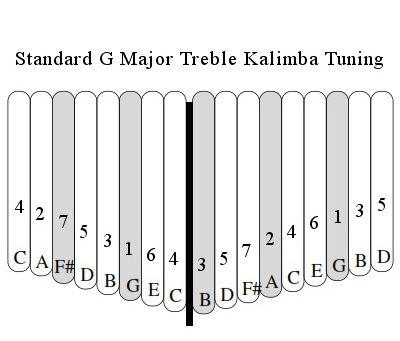

Ask a Question
Want to reply to this thread or ask your own question?
You'll need to choose a username for the site, which only take a couple of moments. After that, you can post your question and our members will help you out.
Similar Threads
Forum statistics
Latest Threads
-
Sequential Prophet 6 Synthesizer 6 Voice Analog Synthesizer (49 Key Keyboard) Like New!
- Started by 62stratcat
-
Hello Muso Friends
- Started by 62stratcat
-
Has Anyone Been Paying Attention to the Arturia Astrolab that has been Released?
- Started by Diallady
-
Mono, Stereo and panning live
- Started by Briggy
-
Should you mix electric piano sounds or not?
- Started by keyboardkev81
-
PSR 1000
- Started by Soundlight
-
External monitor
- Started by cabra
-
Go keys 3 speakers
- Started by Hanna
-
MIDI files
- Started by JohnBoy
-
Yamaha Style Questions: 12/8 Time Signature
- Started by Kebbel

